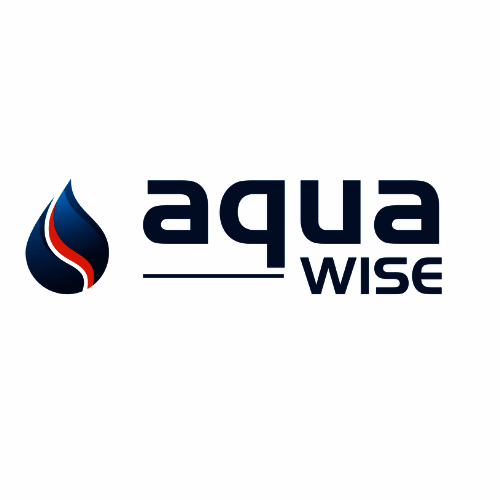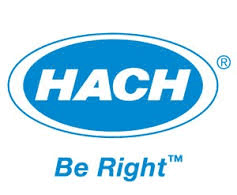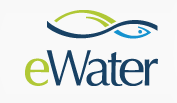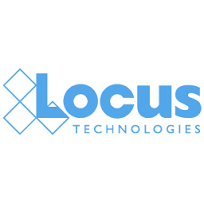What Is Water Management Software?
Water management software is a technological solution that assists enterprises, governments, and individuals in effectively managing their water resources and infrastructure. It provides a comprehensive and centralized platform for monitoring, tracking, and evaluating all elements of water consumption, distribution, and treatment. This software uses advanced algorithms and data analytics to provide significant insights into water consumption trends, detect leaks or waste, and optimize water distribution.
It can also work with sensors and smart meters to collect real-time data and deliver precise readings. One of the most important characteristics of water management software is its capacity to automate a variety of functions, including scheduling maintenance and repairs, creating reports, and alerting for potential problems. This can considerably improve operational efficiency while lowering maintenance expenses.
Furthermore, water management software can help you comply with legal requirements and standards. It can generate reports and give the data required for monitoring and reporting to ensure that organizations follow water usage guidelines. Furthermore, this software can anticipate future water demand based on previous data and patterns, allowing users to plan and distribute water resources more effectively. It also supports scenario planning and modeling, enabling users to make informed decisions on water management methods.
What Are The Recent Trends In Water Management Software?
Water management software is constantly improving to suit the growing demands for effective water resource management. With increased concerns about water scarcity and sustainability, there has been an increase in the development and acceptance of technology-driven solutions for managing and conserving water resources.
We'll go over the most recent trends in water management software that purchasers should keep in mind when deciding which to purchase.
1. Cloud-Based Solutions: The most significant trend in water management software is the transition to cloud-based solutions. Cloud technology enables users to access applications remotely, making it easier for water management teams to monitor and analyze data from any location. This trend reduces the need for expensive on-premise hardware and software installs and updates.
2. Internet Of Things (IoT): Integration of IoT technology is a current trend in water management software. IoT sensors can be deployed in water infrastructure to collect real-time information about water amount and quality. This data can be utilized to detect potential leaks and optimize water distribution, increasing overall efficiency and lowering expenses.
3. Artificial Intelligence (AI): AI-powered technology has made its way into water management software, allowing for more precise data analysis and forecasts. AI algorithms may identify trends and anomalies in massive datasets, offering useful information for decision-making. This tendency has dramatically increased the efficiency and effectiveness of water resource management.
4. Data Visualization: With the introduction of new data visualization techniques, water management software can now display complex data in a more user-friendly manner. Interactive dashboards and maps make it simple to see how much water is used, how it is distributed, and where problems may arise. This tendency has made it easier for non-technical individuals to grasp and apply data.
5. Mobile Applications: Water management software is now adopting mobile applications, making it even easier for users to obtain data on the go. These apps include remote monitoring, data entry, and analytics, which provide users with real-time information and alerts for any irregularities.
Benefits Of Using Water Management Software
Water management software is a crucial tool for businesses and organizations that deal with water management on a daily basis. In today’s world, where the demand for water is increasing and sustainability is a growing concern, it has become essential to efficiently manage and monitor water resources. That's where water management software comes in – a powerful and innovative solution that streamlines the management of water resources and helps users to improve their water usage efficiency. So, what are the benefits of using water management software?
Let’s take a closer look:
1. Centralized Data Management: One of the key benefits of using water management software is its ability to centralize data management. Instead of relying on manual data collection and management, the software allows users to store all the necessary data in a secure and easily accessible online platform. This not only saves time but also reduces the risk of human errors, leading to more accurate and reliable data.
2. Real-Time Monitoring: With water management software, users have access to real-time data, providing them with a better understanding of their water usage patterns. This enables them to identify potential issues and take quick actions to prevent water wastage. Moreover, the software also allows for remote monitoring, making it easy to keep track of water resources from anywhere at any time.
3. Efficient Resource Allocation: By utilizing advanced algorithms and data analysis, water management software helps users to optimize their water usage by identifying areas of improvement and suggesting efficient ways to allocate resources. This not only reduces water wastage but also helps businesses to save on their water bills, making it a cost-effective solution in the long run.
4. Compliance With Regulations: In the water management industry, compliance with regulations is crucial. Water management software comes with built-in compliance features, ensuring that businesses maintain compliance with local, state, and federal regulations. This not only helps to avoid penalties but also improves the overall sustainability of the organization.
5. Track And Report Performance: Water management software provides detailed reports and analytics, allowing users to track their performance over time. This not only helps in identifying areas for improvement but also provides valuable insights that can be used to make informed decisions regarding water management strategies.
Important Factors To Consider While Purchasing Water Management Software?
When it comes to choosing water management software, there are several crucial elements to consider in order to make an informed decision.
Here are the key criteria that any prospective buyer should consider:
1. Water Management Needs: The first step is to identify your organization's specific water management requirements. This could include tracking water consumption, controlling water quality, or adopting water-saving programs. Identifying your exact criteria will help you narrow down your options and select software that meets your organization's demands.
2. Features And Functionality: It is critical to assess the features and functionalities provided by the program. Look for capabilities like data analysis, real-time monitoring, and automated reporting to help streamline your operations and improve water management efficiency. Consider your organization's present and future requirements to ensure that the software includes the functionality you need to achieve your long-term objectives.
3. Customization And Scalability: Each firm has its own water management methods and requirements. As a result, it is critical to choose software that is both configurable and scalable. This allows you to personalize the software to your specific operations while also accommodating future organizational growth and changes.
4. Data Security: Water management involves sensitive data that must be safely stored and handled. To reduce the danger of data breaches and loss, ensure that the program includes strong security measures such as data encryption and regular backups.
5. User-Friendly Interface: A user-friendly interface is required for the software to function efficiently and smoothly. Look for software with a simple and intuitive user interface that requires little training and enables for quick navigation and access to relevant data and tools.
6. Cost-Effectiveness: The software is a substantial investment, thus it must deliver value for your organization's money. Consider the software's pricing strategy, whether it is a one-time purchase or a subscription-based service, and weigh it against its features and functions to determine the most cost-effective solution.
7. Customer Support: Implementing new software can present unanticipated issues that necessitate technical support. Look for a software vendor that provides comprehensive customer support, such as training, troubleshooting, and continuing assistance, to help your firm get the most out of the program.
What Are The Key Features To Look For In Water Management Software?
As the demand for effective and sustainable water management solutions increases, so does the market for water management software. This specialist program has a number of capabilities that allow users to monitor, evaluate, and optimize their water usage and conservation efforts. However, with so many alternatives available, it can be difficult to determine which functions to prioritize while searching for the best water management software.
The following are the essential characteristics to consider when selecting water management software:
1. Real-Time Data Monitoring And Visualization: One of the most important aspects of water management software is its capacity to collect and show real-time data from a variety of sources, including meters, sensors, and weather stations. This enables consumers to monitor their water consumption and detect any irregularities or potential problems right away. Look for software that allows you to create custom dashboards and visualizations to make data analysis easier and more effective.
2. Automatic Metering And Billing: To effectively track water usage and expenditures, seek for software that includes automated meter reading and billing features. This functionality removes manual data entry and billing processes, lowering the risk of human mistake and saving time for water management teams. It also enables more exact and frequent billing, allowing users to spot inefficiencies and take corrective action quickly.
3. Leak Detection And Management: Water leaks are one of the leading causes of water waste and high bills. Look for software that includes leak detection and management tools, such as leak alerts and real-time flow monitoring. This feature can help detect and locate leaks rapidly, reducing water wastage and preventing damage to the water supply. infrastructure
4. Water Quality Monitoring: In addition to quantity, water quality is a critical component of water management. Look for software that supports water quality monitoring and reporting. It should be able to monitor parameters like pH, chlorine, and turbidity and provide visuals and alarms for any anomalies or breaches.
5. Customizable Reporting And Analytics: Data is only useful if it can be converted into actionable insights. Look for software that includes customisable reporting and analytics options to help you make informed decisions regarding your water management plan. This could involve trend analysis, benchmarking, and predictive analytics to identify possible problems and optimize water consumption.
6. Compatibility And Integration: To ensure seamless integration and effective data transfer, seek for water management software that works with your existing systems and equipment, such as meters and sensors. It should also allow for integrations with other necessary applications, such as invoicing systems or customer management platforms.
7. Mobile Accessibility: Water management staff are frequently on the go, therefore mobile accessibility is an essential aspect. Look for software that includes a mobile app or a responsive web interface, allowing you to access data and do tasks from anywhere and at any time.
Why Do Businesses Need Water Management Software?
Water management is an important part of running a successful business, particularly in businesses that rely heavily on water resources like agriculture, manufacturing, and energy generation. Climate change, population expansion, and overuse are all contributing to rising uncertainty about the supply and quality of water in the modern world. Here is when water management software comes in handy.
Water management software is a powerful tool that helps businesses track, analyze, and optimize their water usage, resulting in cost savings, increased efficiency, and a lower environmental impact. This software employs powerful data analytics, predictive modeling, and real-time monitoring to help businesses understand their water usage trends and suggest opportunities for improvement.
One of the key reasons organizations require water management software is to meet regulatory requirements and avoid costly penalties. Most countries have legislation in place that require enterprises to monitor and report their water usage, and failing to do so can result in severe fines. Water management software streamlines the process by automating data collecting and reporting, allowing businesses to remain compliant without the stress of human record-keeping.
Furthermore, water management software enables enterprises to identify and reduce water waste. Unused or leaking water can create both financial and environmental damage. Real-time monitoring and notifications enable firms to immediately detect and address any concerns, resulting in significant long-term cost savings. This program also tracks water usage by department or process, allowing firms to identify regions of excessive consumption and apply actions to minimize it.
Another significant benefit of adopting water management software is the capacity to predict future water consumption. Businesses can forecast and prepare for their water consumption by evaluating past data and trends. This is especially useful for sectors that face seasonal fluctuations in water demand, as it allows them to make more informed decisions about their water requirements and avoid supply shortages.
How Much Time Is Required To Implement Water Management Software?
The time required to implement water management software varies according to the product, the organization's size, and the level of customization necessary. On average, the implementation procedure can last from a few weeks to several months. During the early phases, the software vendor will collaborate extensively with the organization to determine their specific requirements and goals.
This may include completing a site evaluation, evaluating current data, and interviewing stakeholders. Once the requirements and goals have been determined, the software will be configured and customized to match the organization's needs. This can include everything from setting up data collection and monitoring systems to creating automated reporting processes. The implementation phase may also include staff training and integration with existing systems and processes.
This can take a long period, especially in larger firms with complicated operations. It is vital to note that the length of the implementation procedure does not reflect the software's effectiveness. In fact, a longer implementation period may allow for more extensive customization and testing, resulting in a more personalized and efficient solution. To achieve a seamless and timely implementation, the company must have a dedicated team and maintain open communication with the software vendor. This will assist in identifying potential barriers and ensuring that the system is fully functional and optimized for the organization's requirements.
What Is The Level Of Customization Available In Water Management Software?
Water management software is a strong tool for individuals and organizations to effectively manage their water resources. When looking into acquiring water management software, it is critical to understand the level of customisation offered. This feature can significantly affect the software's functioning and effectiveness in satisfying your specific requirements. The extent of customization in water management software varies according to the provider's capabilities.
There are three levels of customization: basic, advanced, and totally customizable. Basic customization allows you to change basic parts of the software, such as producing custom reports or adding certain data fields. This level of flexibility is commonly found in most entry-level water management software and is enough for basic water management requirements.
In contrast, advanced customization provides a more personalized approach to the software. It allows users to design custom workflows, interface with other software, and configure data alerts and notifications based on their specific needs. This level of customization is suited for more sophisticated water management requirements, such as maintaining a large-scale water system or meeting regulatory standards.
Finally, fully customizable water management software provides the greatest degree of flexibility and adaptability. Users can create the software from scratch, including features and functionalities unique to their water management procedures. This level of customization necessitates a greater investment of time and resources, but it offers the most comprehensive solution for complex water management requirements.
When analyzing the extent of customization in water management software, you must consider your individual needs and determine whether the possible benefits outweigh the expenses. It is also critical to interact with the software vendor and obtain a complete understanding of their modification options to ensure that it meets your requirements.
Which Industries Can Benefit The Most From Water Management Software?
Water management software is an invaluable tool for businesses trying to simplify their water usage and improve operational efficiency. This new device is intended to assist businesses and industries in tracking, monitoring, and managing their water resources more effectively.
While the advantages may differ based on the individual demands of each firm, there are certain main industries that stand to benefit the most from investing in water management software.
1. Agriculture: Water is essential for crop and livestock production. Farmers and ranchers can use water management software to optimize their irrigation systems and save wastage. This not only conserves valuable water supplies, but also reduces operational expenses for agricultural firms.
2. Manufacturing: Water is used extensively throughout the manufacturing process, whether for washing, cooling, or processing materials. Water management software allows manufacturers to properly analyze their water consumption, discover any leaks or inefficiencies, and make data-driven decisions to cut water usage and expenses.
3. Municipalities: Cities and municipalities are in charge of supplying clean and safe drinking water to their citizens. Water management software can assist municipalities in monitoring their water usage and identifying strategies to conserve and minimize water loss, resulting in cost savings and a more sustainable water supply for their communities.
4. Energy: The energy industry uses a large volume of water for a variety of operations, including power generating and cooling systems. Water management software enables energy firms to track their water usage, detect potential leaks or equipment failures, and optimize their water usage to save money and increase sustainability.
5. Hospitality: Hotels, resorts, and other lodging facilities consume a lot of water for guest services, laundry, and gardening. Water management software enables these businesses to efficiently assess their water consumption, identify areas for improvement, and implement water conservation measures to save money and improve their sustainability practices.
6. Mining: The mining industry likewise relies substantially on water to run its operations. Water management software helps mining businesses monitor their water usage, reduce waste, and comply with water discharge and treatment requirements. This not only improves their environmental effect, but also lowers the expenditures connected with water usage and treatment.
Conclusion
Finally, investing in a water management software system can tremendously help businesses and organizations that manage and conserve water resources. These software solutions, which include a variety of features and functionalities meant to improve processes, increase productivity, and cut costs, can benefit both the environment and the bottom line.
When considering acquiring water management software, you should first examine your organization's specific needs and requirements. Choose a solution that includes complete water tracking and analytics, as well as customisable reporting and data visualization options. Make sure the program is easy to use and integrate with your existing systems.
It is also critical to select a software vendor who provides continuing customer support and upgrades, as well as training and resources, to ensure that the program is implemented and used successfully. Finally, consider the potential return on investment (ROI) that water management software can provide. The time and resources saved, as well as the ability to make data-driven decisions, can result in significant cost savings and help to make the operation more sustainable.
Overall, water management software has the potential to transform how enterprises approach water conservation and management. By carefully considering your requirements and comparing several software solutions, you can find the ideal solution to help your company or organization succeed while also contributing to a greener, more sustainable future.






















